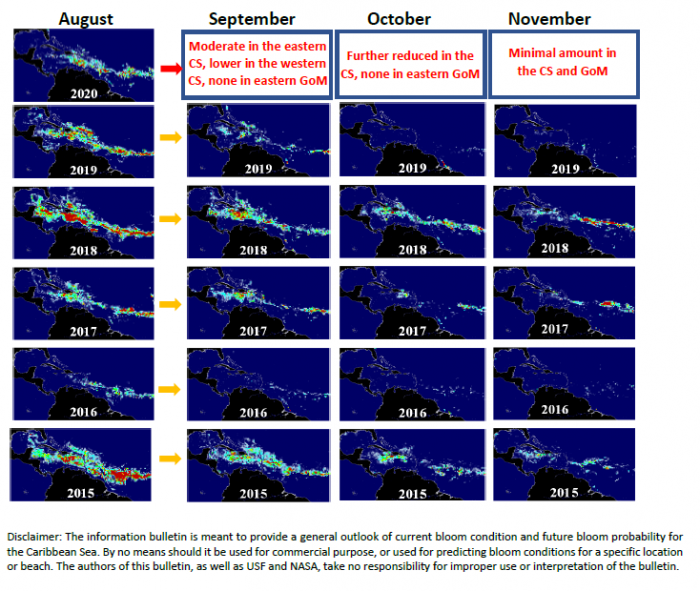The maps below show Sargassum abundance, with warm colors representing high abundance. In August 2020, the overall Sargassum amount continued to decrease across the central Atlantic. Large amount of Sargassum was still observed in the Central West Atlantic (CWA, i.e., the region east of the Lesser Antilles in the maps below), the Central East Atlantic (CEA), and most of the eastern Caribbean Sea (CS). However, by end of August, the following regions are almost free of large Sargassum mats: western CS, Gulf of Mexico, Florida Straits, and east coast of Florida. In all regions combined, the total Sargassum amount decreased from 8.0 M tons in July to 4.2 M metric tons in August, lower than August 2018, August 2015, August 2019, and August 2017.

Looking ahead, the eastern Caribbean will continue experiencing some moderate amount of Sargassum in September 2020 with scattered beaching events. The western Caribbean is likely to experience small amount of Sargassum, while the following regions may continue to be largely free of large Sargassum mats: Gulf of Mexico, Florida Straits, and east coast of Florida. This situation may further continue to October – November. We will keep a close eye on how Sargassum in the CS and the tropical Atlantic may evolve in the next two months.
More updates will be provided by the end of September 2020, and more information and imagery can be found from the Sargassum Watch System (SaWS, https://optics.marine.usf.edu/projects/saws.html https://optics.marine.usf.edu/projects/saws.html )


